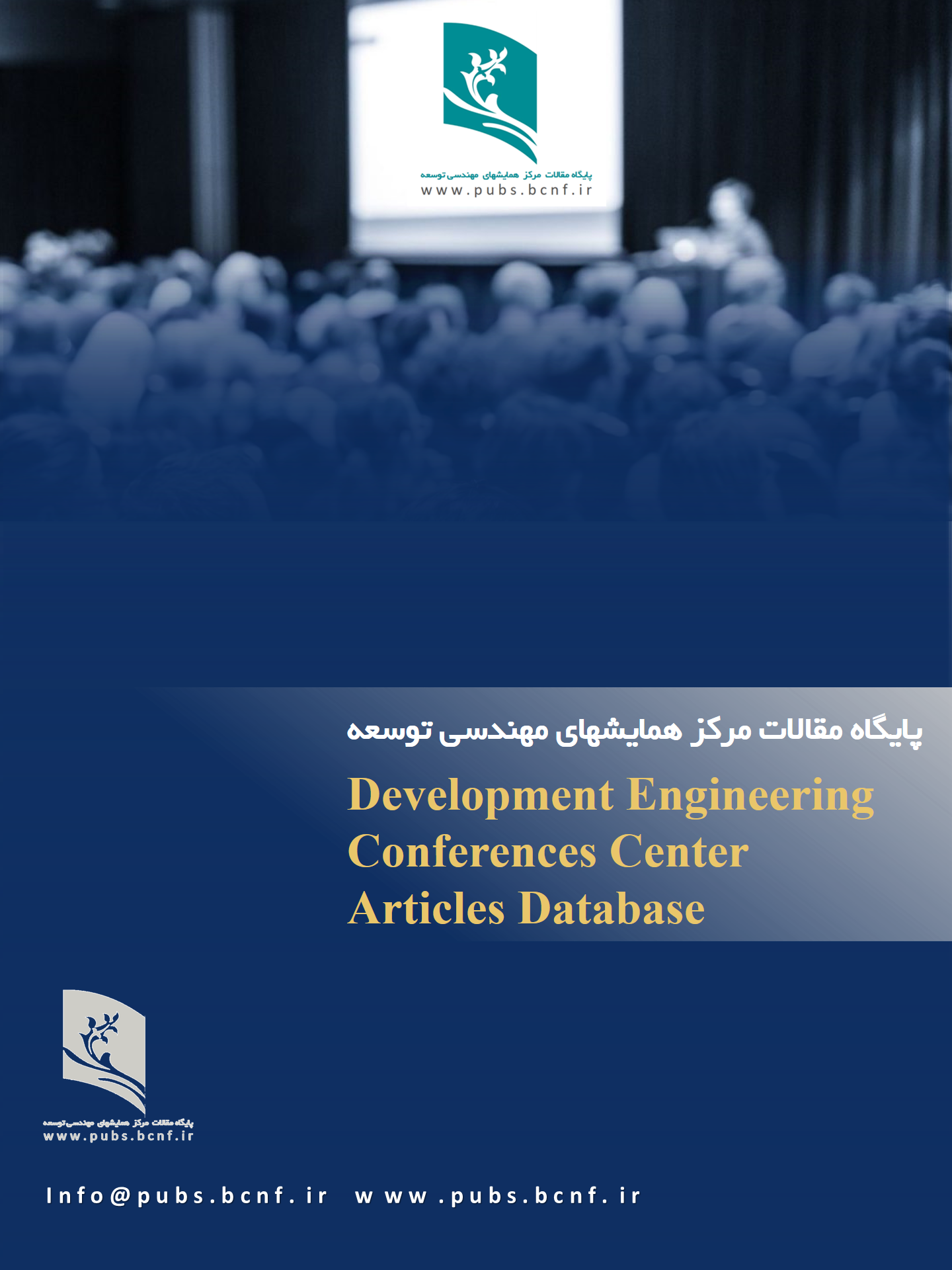Feasibility Study of a Hybrid Reverse Electrodialysis System for Wastewater Treatment and Energy Production from Reverse Osmosis System Effluent
Keywords:
Reverse Osmosis (R.O.), Reverse electrodialysis(RED), Hybrid systems,Renewable energy, Wastewater TreatmentAbstract
RO concentrate is often discharged into natural aquatic environments, increasing salinity and threatening marine ecosystems. Recently, new processes have been developed to treat and recover brine from the RO process, with reverse electrodialysis (RED) emerging as a promising solution. RED is an electrical membrane process that separates mineral ions using direct electric current, offering a method to treat high-salinity concentrate from the RO process with moderate energy consumption. In this study, the effluent from the Konarak desalination plant was evaluated for use as feed for the RED system. Results showed that the suspended solids in the effluent were approximately 10,000 mg/L, the TDS was around 50,000 mg/L, and the water hardness was about 5 mg/L. The findings indicate that the effluent from the desalination unit is suitable for use in hybrid systems such as RED-RO. The integration of the RED process in desalination plants can lead to a more environmentally friendly approach and achieve greater energy efficiency.
Downloads
References
[1] A. Venault, Y. Chang, H.-S. Yang, P.-Y. Lin, Y.-J. Shih, and A. Higuchi, “Surface self-assembled zwitterionization of poly(vinylidene fluoride) microfiltration membranes via hydrophobic-driven coating for improved blood compatibility,” J. Membr. Sci., vol. 454, pp. 253–263, Mar. 2014, doi: 10.1016/j.memsci.2013.11.050.
[2] N. H. Othman, N. Kabay, and E. Guler, “Principles of reverse electrodialysis and development of integrated-based system for power generation and water treatment: a review,” Rev. Chem. Eng., vol. 38, no. 8, pp. 921–958, Nov. 2022, doi: 10.1515/revce-2020-0070.
[3] N. H. Othman, N. Kabay, and E. Guler, “Principles of reverse electrodialysis and development of integrated-based system for power generation and water treatment: a review,” Rev. Chem. Eng., vol. 38, no. 8, pp. 921–958, Nov. 2022, doi: 10.1515/revce-2020-0070.
[4] R. A. Tufa et al., “Progress and prospects in reverse electrodialysis for salinity gradient energy conversion and storage,” Appl. Energy, vol. 225, pp. 290–331, 2018.
[5] S. Yu, Y. Cui, Y. Shao, and F. Han, “Simulation Research on the Effect of Coupled Heat and Moisture Transfer on the Energy Consumption and Indoor Environment of Public Buildings,” Energies, vol. 12, no. 1, p. 141, Jan. 2019, doi: 10.3390/en12010141.
[6] A. Tamburini, A. Cipollina, M. Tedesco, L. Gurreri, M. Ciofalo, and G. Micale, “The REAPower project: power production from saline waters and concentrated brines,” in Current Trends and Future Developments on (Bio-) Membranes, Elsevier, 2019, pp. 407–448.
[7] M. Yasukawa, S. Mehdizadeh, T. Sakurada, T. Abo, M. Kuno, and M. Higa, “Power generation performance of a bench-scale reverse electrodialysis stack using wastewater discharged from sewage treatment and seawater reverse osmosis,” Desalination, vol. 491, p. 114449, 2020.
[8] H. Tian, Y. Wang, Y. Pei, and J. C. Crittenden, “Unique applications and improvements of reverse electrodialysis: A review and outlook,” Appl. Energy, vol. 262, p. 114482, 2020.
[9] J. Fuchs, “Co-locating Desalination Plants and Reverse Electrodialysis A Systematic Literature Review on Economic and Technical Barriers,” 2023.
[10] O. Nir, E. Marvin, and O. Lahav, “Accurate and self-consistent procedure for determining pH in seawater desalination brines and its manifestation in reverse osmosis modeling,” Water Res., vol. 64, pp. 187–195, 2014.
[11] D. Notz, J. S. Wettlaufer, and M. G. Worster, “A non-destructive method for measuring the salinity and solid fraction of growing sea ice in situ,” J. Glaciol., vol. 51, no. 172, pp. 159–166, 2005.
[12] A. Al-Kubaish, J. Salama, and W. Al-Jurayan, “Study of Total Dissolved Solids (TDS) Concentrations Factor of SWCC Al-Khobar Plant Seawater Intakes,” Comput. Water Energy Environ. Eng., vol. 13, no. 1, pp. 1–12, 2023.
[13] L. Chan, Y. Li, and M. K. Stenstrom, “Protocol evaluation of the total suspended solids and suspended sediment concentration methods: Solid recovery efficiency and application for stormwater analysis,” Water Environ. Res., vol. 80, no. 9, pp. 796–805, 2008.
[14] W. Mu et al., “ECWS: Soil Salinity Measurement Method Based on Electrical Conductivity and Moisture Content,” Agronomy, vol. 14, no. 7, p. 1345, 2024.
[15] Z. Fang et al., “Nanochannels and nanoporous membranes in reverse electrodialysis for harvesting osmotic energy,” Appl. Phys. A, vol. 128, no. 12, p. 1080, 2022.
[16] H. Geng, W. Zhang, X. Zhao, W. Shao, and H. Wang, “Research on Reverse Osmosis (RO)/Nanofiltration (NF) Membranes Based on Thin Film Composite (TFC) Structures: Mechanism, Recent Progress and Application,” Membranes, vol. 14, no. 9, p. 190, 2024.
[17] M. A. Ahmed, S. A. Mahmoud, and A. A. Mohamed, “Nanomaterials-modified reverse osmosis membranes: a comprehensive review,” RSC Adv., vol. 14, no. 27, pp. 18879–18906, 2024.
[18] O. S. A. El-Kawi, “Assessing the Effectiveness of Solar Photovoltaic Powered Reverse Osmosis Desalination Systems across Different Water Resources in Saudi Arabia,” Open J. Mod. Hydrol., vol. 15, no. 01, pp. 1–17, 2025, doi: 10.4236/ojmh.2025.151001.
[19] T. F. Gül et al., “Review on reverse electrodialysis process-a pioneering technology for energy generation by salinity gradient,” Front. Membr. Sci. Technol., vol. 3, p. 1414721, 2024.
[20] M. Eti, N. Hidayati Othman, E. Güler, and N. Kabay, “Ion exchange membranes for reverse electrodialysis (RED) applications-recent developments,” J. Membr. Sci. Res., vol. 7, no. 4, pp. 260–267, 2021.



